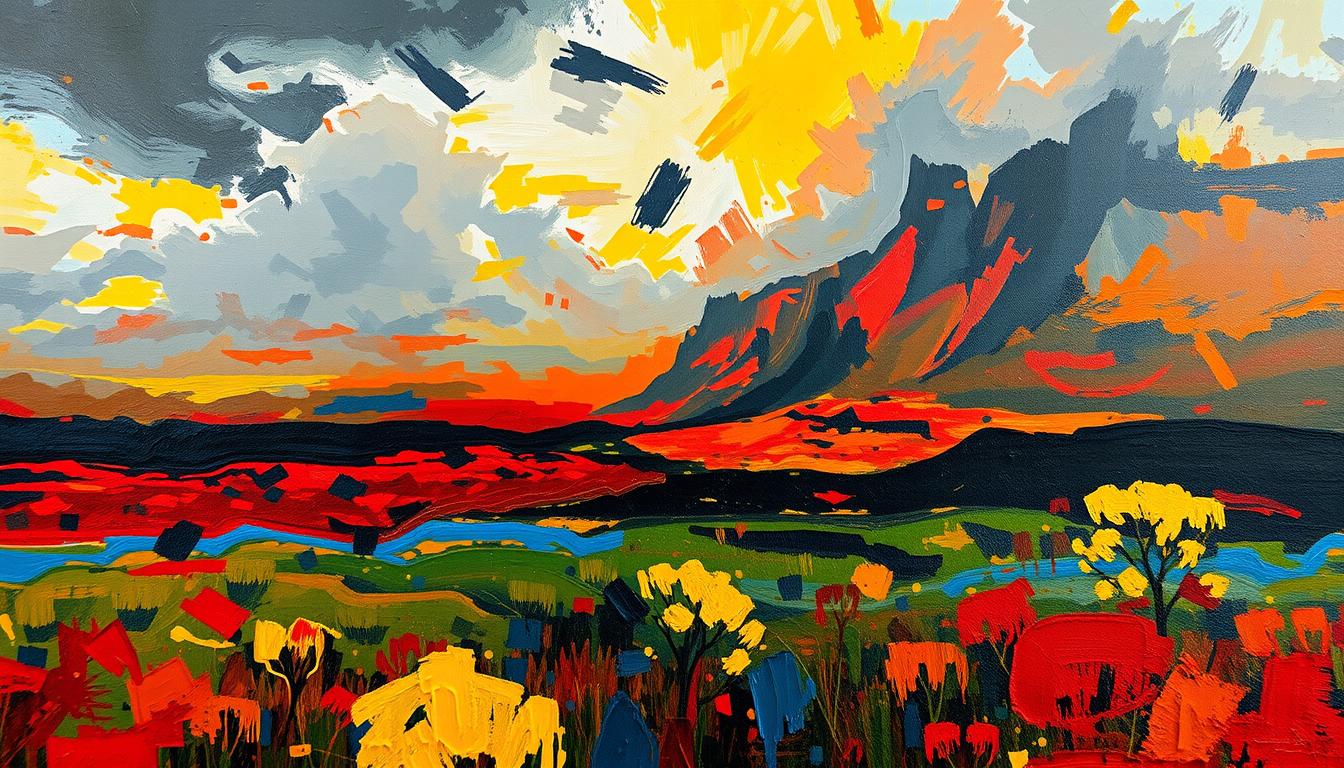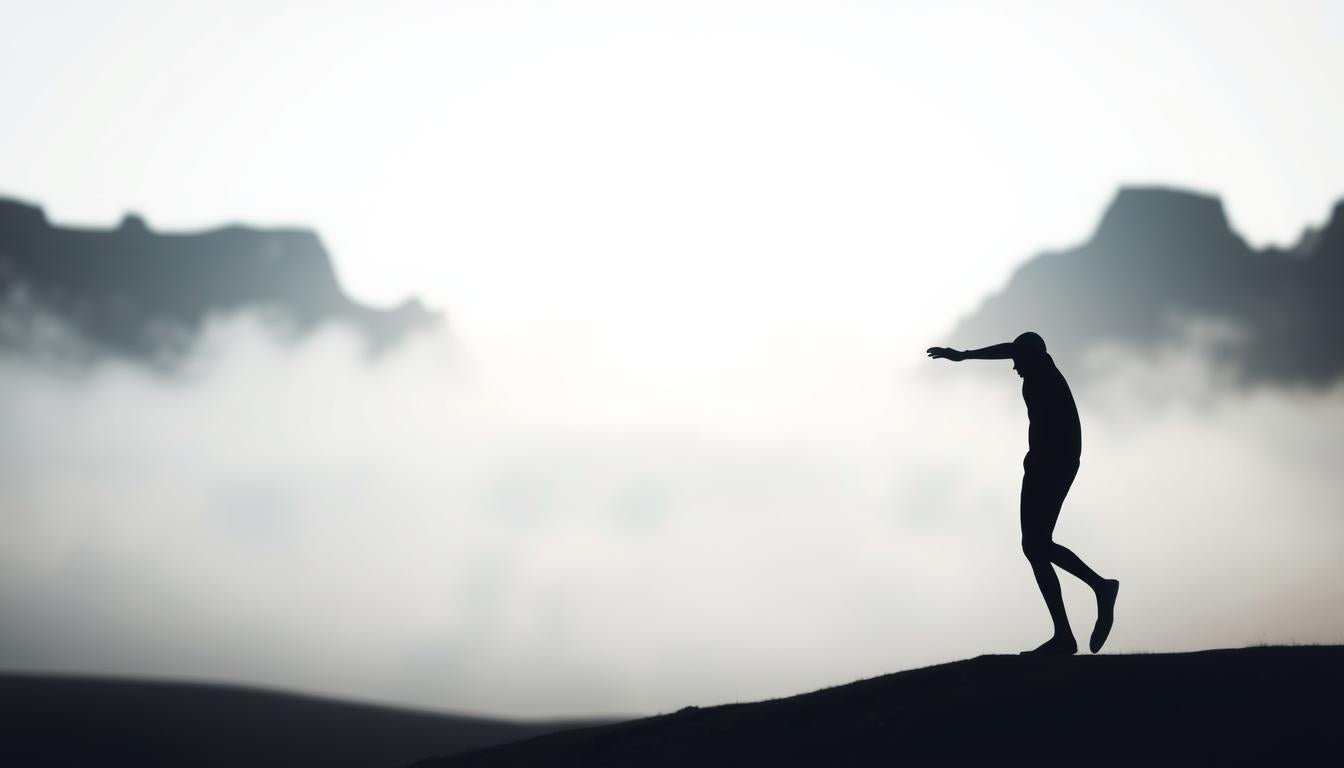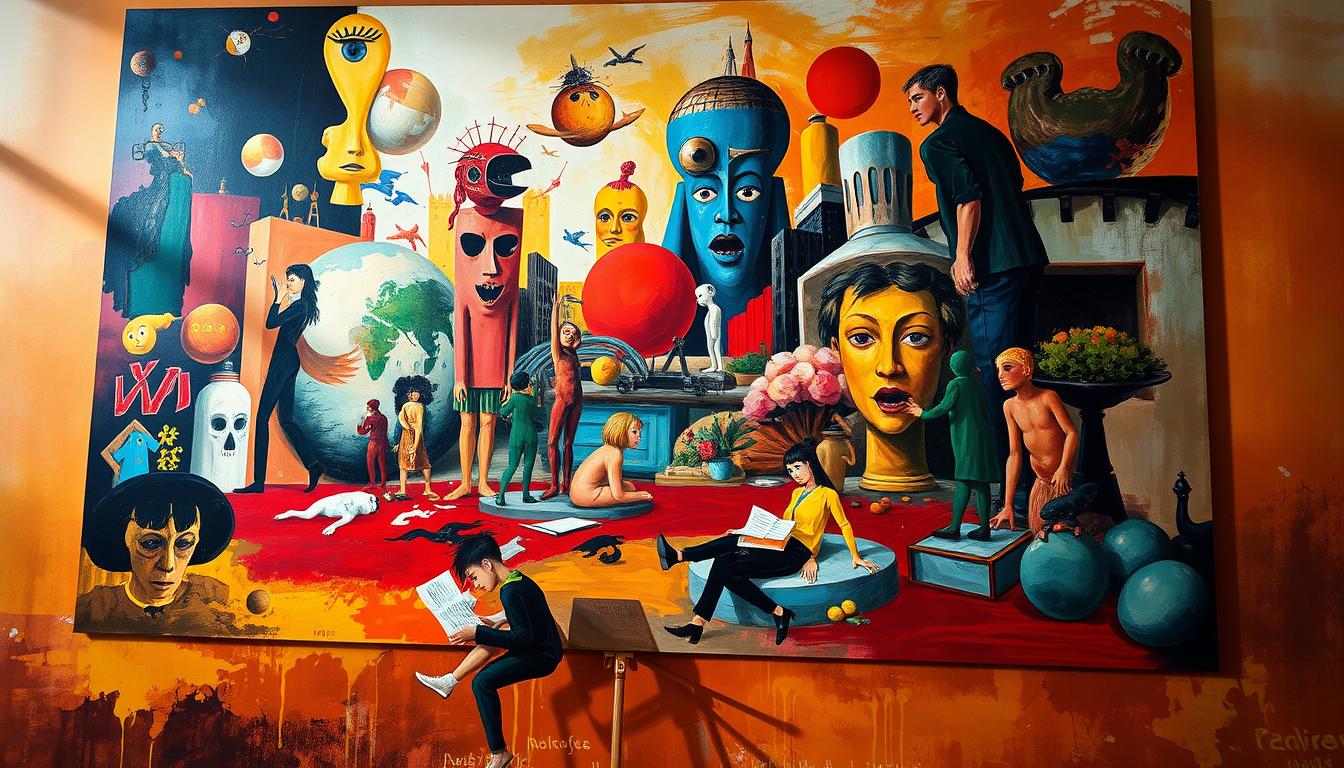Expressionism began in Northern Europe in the early 20th century as artists bent reality to show inner life. They pushed color, line, and form to make feelings visible. This made paintings feel urgent and raw.

Groups like Die Brücke in Dresden and Der Blaue Reiter in Munich led early experiments. Names such as Ernst Ludwig Kirchner, Wassily Kandinsky, Franz Marc, Paul Klee, and August Macke shaped a new visual language. Later currents moved across Europe and reached the United States by mid-century.
Expect a clear, reader-friendly guide that maps five main strands to real places, artists, and paintings. You will learn how historical events, from pre-war tensions to mid-century shifts, pushed this movement around the world. For a quick list of key figures and further reading, see this short guide to notable expressionist artists.
Key Takeaways
- Expressionism prioritized inner feelings over literal depiction.
- Early groups formed in Dresden and Munich shaped the movement.
- Distinct strands link to specific artists and local scenes.
- Paintings aimed to convey emotions with bold color and form.
- Historical turmoil helped spread and transform the style.
- Later movements adapted these ideas in the United States.
Understanding Expressionism in the early 20th century
Around 1910 artists began to prefer inner experience over optical truth. Antonín Matějček’s writing between 1910 and 1913 helped fix a modern meaning: feeling mattered more than accurate view.
Forerunners such as Edvard Munch and James Ensor showed how a single image could hold anxiety or satire. Van Gogh’s color and brushwork also fed this direction.
Rapid industrialization and crowded cities created a cultural reaction. Painters warped forms, sharpened line, and picked dissonant color to make mood visible in their works.
World War I and the chaotic years after it deepened the urgency. By 1937 the Nazi “Degenerate Art” campaign seized many pieces, scattering expressionists and their paintings across the world.
- This context sets the stage to recognize distinct types and local voices that followed.
For a concise overview of the movement’s evolution, see a useful guide on the history of expressionism.
What are the 5 types of Expressionism?
Different local groups turned shared urgency into unique visual vocabularies across Europe and the United States. Each branch used paint and mark-making to push feeling into view.

Die Brücke: Raw urban energy
Die Brücke formed in Dresden in 1905 and was led by Ernst Ludwig Kirchner. Members like Erich Heckel and Emil Nolde used jagged lines, woodcut prints, and distorted forms to capture city anxiety.
Der Blaue Reiter: Spirit and abstraction
Founded in Munich in 1911, this circle around Wassily Kandinsky and Franz Marc explored color as a spiritual language. Paul Klee and August Macke favored simplified shapes that read like visual music.
Viennese intensity
In Vienna, Egon Schiele and Oskar Kokoschka made the body a site of psychological drama. Their taut figures and charged portraits link back to earlier names such as Edvard Munch.
School of Paris: Migrant voices
Paris hosted émigré painters like Chaïm Soutine and Marc Chagall. Their emotive figuration and bold palettes mixed memory, identity, and cosmopolitan art.
American and postwar figurative currents
After World War II, movements such as Boston Expressionism kept human drama central even as abstraction grew. Museums reframed earlier works as cultural resistance and renewed interest in these varied paintings.
For a quick contextual link to the wider history of expressionism, revisit key moments that shaped these five strands.
Key features, artists, and works that shaped the styles
Distinct visual strategies and landmark works show how artists turned inner life into visible drama.

Emotions over reality: color, line, and twisting forms
Expressionist paintings prize feelings over optical accuracy. Artists used amplified colors, slashing lines, and warped perspectives so emotion reshapes the scene.
Edvard Munch’s The Scream fixed a visual for existential fear. Ernst Ludwig Kirchner’s city scenes and woodcuts sharpen contours and compress space to heighten mood.
World events and reaction: prewar anxiety to Degenerate Art
By the 1930s political pressure hit many works. The 1937 Degenerate Art campaign seized and sold or destroyed pieces by expressionists like ernst ludwig kirchner.
After world war II, these strategies fed renewed figurative currents in the United States, and artists such as Wassily Kandinsky pushed color and shape toward spiritual abstraction.
| Feature | Representative artist | Notable work |
|---|---|---|
| Distorted forms | Edvard Munch | The Scream |
| Jagged urban view | Ernst Ludwig Kirchner | Street Scene (woodcut) |
| Color-driven abstraction | Wassily Kandinsky | Improvisations |
| High-key palettes | Emil Nolde | Seascapes and portraits |
Conclusion
Conclusion
By tracing city circles and studio networks, you can see how each branch gave feeling its own visual code. Die Brücke, Der Blaue Reiter, Viennese work, the School of Paris, and American postwar currents form a clear map across time and place.
Names like Ernst Ludwig Kirchner, Egon Schiele, Oskar Kokoschka, Chaïm Soutine, and Marc Chagall help you read artworks and understand how paintings and works channel emotions. Look for distorted contours, dense color, and charged surfaces.
For a concise background on the movement’s roots and impact in the modern world, see this overview on Expressionism. Keep these types in mind when you visit museums or browse catalogues; they make it easier to connect artists to context and to feel how art translates experience across the century.
Enhance Your Space with Unique Modern Masterpieces
Are you inspired by the innovative mediums and conceptual depth highlighted in our exploration of contemporary art? You’re not alone! Today’s art enthusiasts are seeking cultural relevance and emotional connections in their artwork. However, finding pieces that resonate with modern themes and fit your unique style can be a challenge. That’s where we come in!
At Rossetti Art, we specialize in canvas prints, original paintings, and modern sculptures that celebrate the spirit of now. Each piece created by Chiara Rossetti brings a personal touch that connects deeply with current social narratives—just like the modern masterpieces discussed in the article. Don’t miss out on the chance to elevate your home decor with breathtaking artwork that speaks to your values and aesthetic. Explore our collection today and find your perfect piece! Act now, and transform your space into a gallery of inspiration!
FAQ
What are the five main branches of Expressionism?
Expressionism split into several regional and thematic strains: Die Brücke with raw color and urban angst; Der Blaue Reiter emphasizing spiritual color and early abstraction; Viennese Expressionism focused on psychological intensity and the body; School of Paris Expressionists who brought migrant voices and emotive figuration; and American/Postwar Figurative Expressionism, which evolved from wartime reactions into new, expressive worlds.
How did Die Brücke artists like Ernst Ludwig Kirchner and Emil Nolde paint emotion?
Die Brücke painters used bold, often clashing colors, distorted forms, and jagged lines to convey raw feeling. Works by Ernst Ludwig Kirchner and Emil Nolde prioritize emotional immediacy over naturalism, turning urban scenes and human figures into intense, sometimes unsettling statements.
What made Der Blaue Reiter different from other groups?
Der Blaue Reiter, led by Wassily Kandinsky and Franz Marc, leaned toward spiritual themes and symbolic color. Members like Paul Klee and August Macke experimented with abstraction and simplified forms to express inner life rather than external reality.
Who represents Viennese Expressionism and what subjects did they explore?
Viennese Expressionism includes Egon Schiele and Oskar Kokoschka. They focused on psychological intensity, the human body, and intimate portraiture. Their work often exposes vulnerability, eroticism, and emotional extremes through angular lines and raw brushwork.
What is the School of Paris Expressionists' contribution?
Artists such as Chaïm Soutine and Marc Chagall brought migrant perspectives and strong figurative distortion to Paris. They fused personal memory, folklore, and modernist technique to create emotionally charged, often color-rich paintings.
How did American and postwar figurative Expressionism evolve after World War II?
Postwar figurative Expressionism — including Boston Expressionism and other U.S. movements — reacted to wartime trauma, political upheaval, and shifting cultural landscapes. Artists blended European Expressionist legacies with new materials and subjects to process collective and personal histories.
Which features define Expressionist painting across these types?
Common traits include emphasis on emotion over realism, vivid or jarring color, energetic brushwork, and distorted forms. From Edvard Munch’s early influence to Kirchner’s cityscapes, artists used visual tension to communicate inner states.
How did world events shape the development of Expressionism?
Political turmoil, rapid urbanization, and World War I and II deeply affected artists. Many reacted against academic traditions and used art to register anxiety, trauma, or spiritual searching. Events like the Nazi “Degenerate Art” campaign further displaced creators and spread Expressionist ideas worldwide.
What notable works should I study to understand these currents?
Key paintings include Edvard Munch’s The Scream for emotional primacy; Ernst Ludwig Kirchner’s street scenes for Die Brücke energy; Kandinsky’s abstract compositions for Der Blaue Reiter theory; Egon Schiele’s portraits for Viennese intensity; and Chaïm Soutine’s meat and figure studies for School of Paris visceral force.
Where can I see major Expressionist collections today?
Important holdings appear in museums like the Neue Galerie in Berlin, the Städel in Frankfurt, the Museum of Modern Art in New York, the Tate Modern in London, and the Leopold Museum in Vienna. Many institutions host rotating exhibitions that trace Expressionism’s international spread.






Leave a comment
This site is protected by hCaptcha and the hCaptcha Privacy Policy and Terms of Service apply.